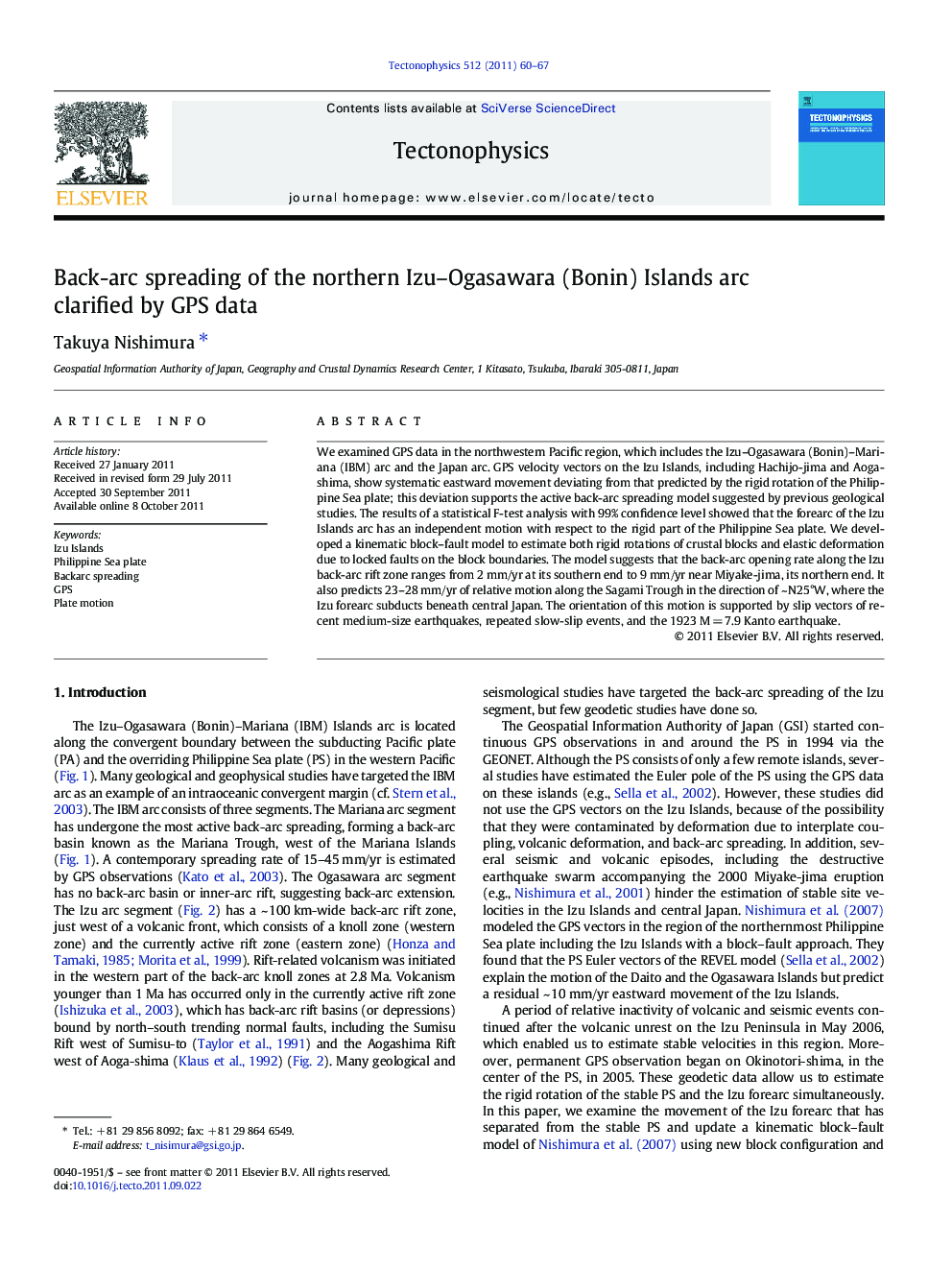| Article ID | Journal | Published Year | Pages | File Type |
|---|---|---|---|---|
| 4693021 | Tectonophysics | 2011 | 8 Pages |
We examined GPS data in the northwestern Pacific region, which includes the Izu–Ogasawara (Bonin)–Mariana (IBM) arc and the Japan arc. GPS velocity vectors on the Izu Islands, including Hachijo-jima and Aoga-shima, show systematic eastward movement deviating from that predicted by the rigid rotation of the Philippine Sea plate; this deviation supports the active back-arc spreading model suggested by previous geological studies. The results of a statistical F-test analysis with 99% confidence level showed that the forearc of the Izu Islands arc has an independent motion with respect to the rigid part of the Philippine Sea plate. We developed a kinematic block–fault model to estimate both rigid rotations of crustal blocks and elastic deformation due to locked faults on the block boundaries. The model suggests that the back-arc opening rate along the Izu back-arc rift zone ranges from 2 mm/yr at its southern end to 9 mm/yr near Miyake-jima, its northern end. It also predicts 23–28 mm/yr of relative motion along the Sagami Trough in the direction of ~ N25°W, where the Izu forearc subducts beneath central Japan. The orientation of this motion is supported by slip vectors of recent medium-size earthquakes, repeated slow-slip events, and the 1923 M = 7.9 Kanto earthquake.
► We examine GPS data in the Izu–Ogasawara–Mariana arc and the Japan arc. ► The Izu Islands arc has an independent motion on the Philippine Sea plate. ► The rate of the Izu back-arc opening increases from 2 to 9 mm/yr toward north.
